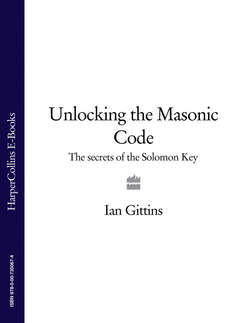Читать книгу Unlocking the Masonic Code: The Secrets of the Solomon Key - Ian Gittins - Страница 19
From Operative to Speculative
ОглавлениеThe Masons’ financial fortunes might have declined during the Renaissance period but the Craft still maintained an enviable social status. The covert fraternity was admired both for its architectural and geometric knowledge and its lofty aims of self-improvement, and as the sixteenth century neared its close there was a tendency for Masonic lodges to admit non-stonemasons—who tended mainly to be sympathetic aristocrats—as honorary members.
This trend began in Scotland, where Freemasonry had long been firmly established: indeed, the world’s oldest surviving Masonic lodge, Kilwinning Lodge No 0, was formed there in 1140. At the end of the 1500s it was even rumoured that King James VI of Scotland had become an honorary Mason. Clearly, membership was no longer restricted to architects and stonecutters.
This was the crucial period in history when Freemasonry underwent a sea change from an elevated series of trade union guilds to a philosophical and moral fraternity open—in theory, at least—to all who wanted to join. This process was largely put on hold in the first part of the seventeenth century, as the English Civil Wars rent the country asunder, but as the Age of Reason dawned in the 1640s and 1650s, Freemasonry truly came into its own.
No longer willing to accept religious doctrine and dogma unquestioningly, people were now investing far more importance in scientific and cerebral analysis of the mysteries of everyday
